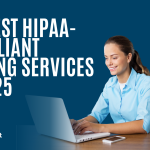While many covered entities use electronic medical systems instead of recording patient data with pen-and-paper, information recording via electronic medical records is much faster.
The Medicaid EHR incentive program has been put into place to help motivate healthcare providers to better utilize the capabilities of these systems. “Meaningful Use” is a legal term that refers to a reasonable implementation of an electronic health record system (EHR), or electronic medical record system (EMR).
In short, it states that the data used by EHR/EMR should be put to use under a set of standard objectives to improve patient care, and once having done so, the provider will be eligible to receive an incentive payment.
Meaningful Use is measured by a number of specific “objectives.” On the path to Meaningful Use, providers are on a three-step path to demonstrate that they are using their tools in a way that could be considered of meaningful use.
The first step is focused on data sharing and data capture. The data is intended to be shared with the patient or other healthcare professionals. Providers will have three years to meet the Stage 1 requirements for Meaningful Use and are required to either adopt or upgrade a certified EHR system.
The success of Stage 1 is measured by adherence to 13 core objectives and 9 menu objectives. A provider must report on all 13 core objectives and meet the thresholds of these objectives. For the 9 menu objectives, only 5 of 9 have to be reported in order to fulfill the requirements of Meaningful Use.
13 Core Objectives:
- Computerized provider order entry (CPOE)
- Drug-drug and drug-allergy checks
- Maintain an up-to-date problem list of current and active diagnoses
- E-Prescribing (eRx)
- Maintain an active medication list
- Maintain active medication allergy list
- Record demographic
- Record and chart changes in vital signs
- Record smoking status for patients 13 years or older
- Implement clinical decision support
- Provide patients with the ability to view, download, or transmit their health information online
- Provide clinical summaries for patients for each office visit
- Protect electronic health information
Stage 1 Menu Objectives:
- Submit electronic data to immunization registries
- Submit electronic syndromic surveillance data to public health agencies3. Drug formulary checks
- Incorporate clinical lab-test results
- Generate lists of patients by specific conditions
- Send reminders to patients for preventive/follow-up care
- Patient-specific education resources
- Medication reconciliation
- Summary of care record for transitions of care
Stage 2 requires that providers have fully implemented Stage 1 throughout the prior three years, and also meet additional Core and Menu objectives, as well as improving clinical processes.
Stage 2 focuses more on the information exchange between the EHR and the patient/provider, as well as increased patient engagement. In some cases, this level of compliance is easier to attain because the EHR software features are provided as built-in functionality.
Additionally, since Stage 2 builds incrementally on Stage 1, further implementation is cumulative. Stage 3 has not been fully documented yet. The requirements of maintaining the standards of Meaningful Use for three years only began in 2014 when providers started to become eligible to move past Stage 2.
What does all of this mean for HIPAA professionals?
It has become more cost-effective than ever for providers to implement EHR/EMR systems. The new influx of HIPAA hosting requirements is bound to create an environment where more-and-more HIPAA data is being generated/utilized than ever before.
Having a financial incentive system in place to compel providers to an increased use of technology in their workflow means that the future of healthcare, more than ever, resides in the cloud.



